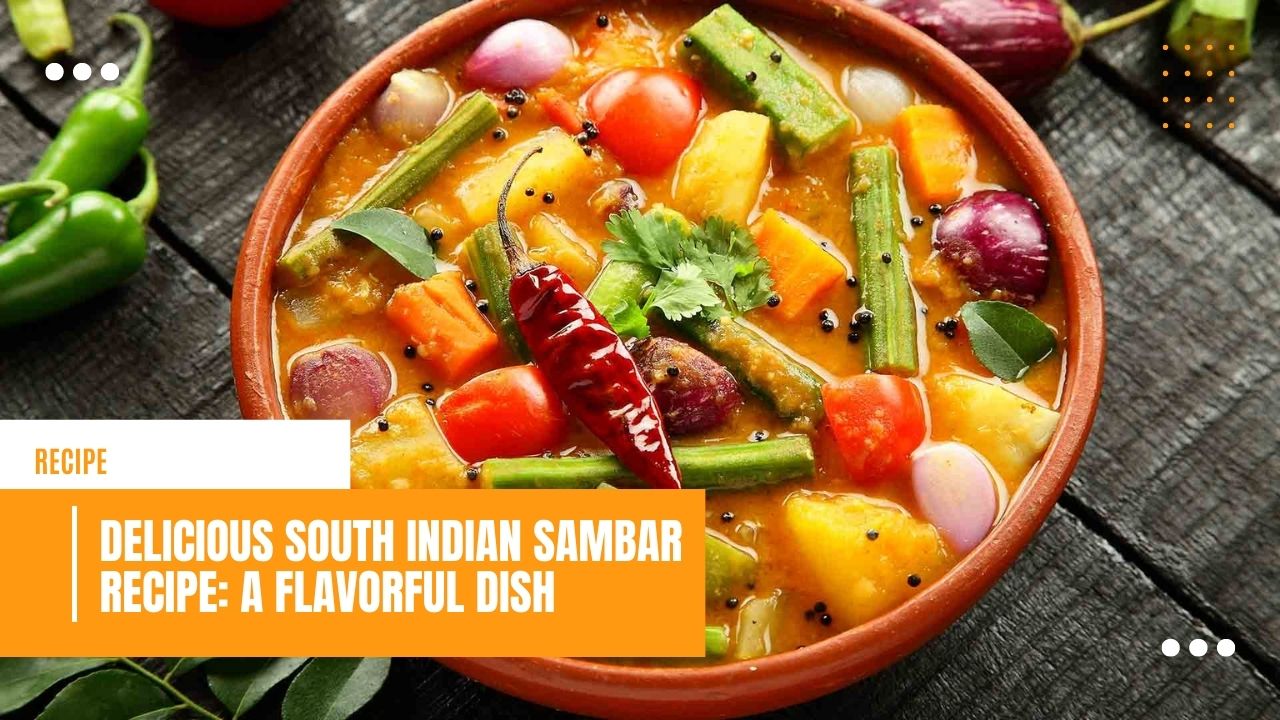Sambar is a delicious and nutritious South Indian dish that is enjoyed by people of all ages. It is a vegetable stew that is made with lentils, vegetables, tamarind, and a special blend of spices. Sambar is traditionally eaten with rice, but it can also be enjoyed with dosa, idli, and vada.
There are many variations of it, but the recipe that we will be discussing today is the authentic South Indian sambar recipe. This recipe uses fresh ingredients and is made from scratch, which is what gives it its authentic taste and flavor.
Ingredients
For the sambar masala
- 1 tablespoon coriander seeds
- 1 teaspoon cumin seeds
- 1 teaspoon black peppercorns
- 1/2 teaspoon fenugreek seeds
- 1/2 teaspoon mustard seeds
- 3-4 dried red chillies
- 1 tablespoon chana dal
- 1 tablespoon urad dal
- 1/2 cup grated coconut
- 1/2 teaspoon turmeric powder
For the sambar
- 1 cup toor dal (split pigeon peas)
- 1 onion, chopped
- 2 tomatoes, chopped
- 1 carrot, chopped
- 1 potato, chopped
- 1 drumstick, cut into 2-inch pieces
- 10-12 curry leaves
- 2 tablespoons oil
- 1/2 teaspoon mustard seeds
- 1/2 teaspoon cumin seeds
- 2-3 dried red chillies
- 2 tablespoons tamarind pulp
- Salt, to taste
- Water, as needed
- Coriander leaves, chopped for garnish
Instructions
-
First, let’s prepare the masala. Dry roast the coriander seeds, cumin seeds, black peppercorns, fenugreek seeds, mustard seeds, dried red chillies, chana dal, and urad dal in a pan until fragrant and slightly browned. Then, add the grated coconut and turmeric powder and roast for another minute. Let it cool down completely and grind into a fine powder using a mixer grinder.
-
Next, wash the toor dal and pressure cook it with 3 cups of water and a pinch of turmeric powder for 4-5 whistles or until the dal is cooked and soft. Once done, mash the dal well and keep it aside.
-
Heat oil in a pan and add mustard seeds, cumin seeds, and dried red chillies. Once the mustard seeds start to crackle, add the chopped onion and curry leaves and sauté until the onion turns translucent.
-
Add the chopped tomatoes and cook until the tomatoes become mushy and soft.
-
Add the chopped vegetables (carrot, potato, drumstick) and sauté for a minute.
-
Add the masala that we prepared earlier and mix well.
-
Add 2 cups of water and salt to taste. Mix well and let it come to a boil.
-
Add the cooked toor dal and tamarind pulp and mix well. Let it simmer for 10-15 minutes or until the vegetables are cooked and the sambar has thickened to the desired consistency.
-
Garnish with chopped coriander leaves and serve hot with rice or any South Indian breakfast like dosa, idli, or vada.
Tips
- You can add any vegetables of your choice to the sambar. Some popular options include brinjal, okra, pumpkin, and radish.
- You can adjust the spiciness of the sambar by adding more or fewer dried red chillies.
Read More: Top 10 Delectable South Indian Dishes To Try Out
FAQs
Q. What is the main ingredient in sambar?
A. The main ingredient in this is toor dal or split pigeon peas. It is what gives the sambar its creamy and thick consistency.
Q. Can I use any other dal instead of toor dal?
A. While toor dal is the traditional choice, you can use other dals such as moong dal or masoor dal as well.
Q. What vegetables can I use in sambar?
A. You can use a variety of vegetables such as carrots, potatoes, onions, tomatoes, drumsticks, pumpkin, brinjal, okra, and radish.
Q. What is tamarind pulp?
A. Tamarind pulp is made from tamarind fruit and is used in sambar to give it a sour taste. You can buy tamarind pulp at any Indian grocery store or make it at home by soaking tamarind in water and extracting the pulp.
Q. What is sambar masala?
A. This masala is a special blend of spices that is used to flavor the sambar. It is made with coriander seeds, cumin seeds, black peppercorns, fenugreek seeds, mustard seeds, dried red chillies, chana dal, urad dal, grated coconut, and turmeric powder.
Q. Can I use store-bought sambar masala instead of making it from scratch?
A. While you can use store-bought sambar masala, making it from scratch gives the sambar its authentic taste and flavor.
Q. How do I adjust the consistency of sambar?
A. If your sambar is too thick, you can add more water. If it’s too thin, you can let it simmer for a little longer until it thickens.
Q. Can I make sambar without vegetables?
A. While vegetables are an essential part , you can make a plain toor dal sambar without vegetables as well.
Q. How long can I store itin the refrigerator?
A. You can store sambar in the refrigerator for up to 3-4 days. Make sure to store it in an airtight container.
Q. Can I freeze it?
A. Yes, you can freeze sambar for up to 2-3 months. Make sure to store it in a freezer-safe container and thaw it before reheating.



